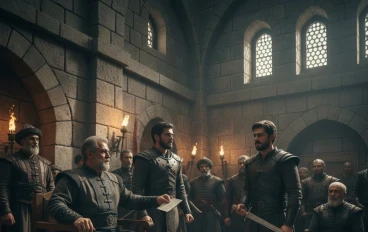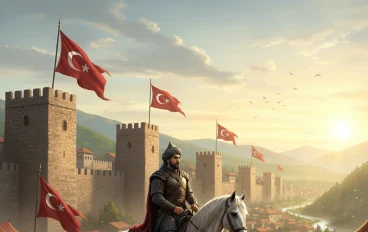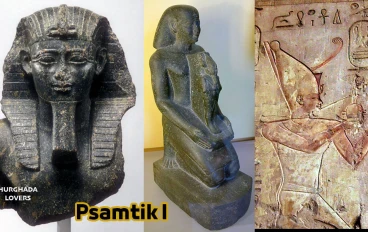
Wars of the Century: How the World Wars Shaped the Twentieth Century
In the summer of 1914, Europe was experiencing a period of relative peace after centuries of continuous wars and conflicts. However, this peace was fragile, and the world was on the brink of witnessing the outbreak of the largest war in its history—a war that would reshape politics, economies, and societies in ways unimaginable. The catalyst for this conflict was a small yet consequential event: the assassination of Archduke Franz Ferdinand, the heir to the Austro-Hungarian throne, and his wife Sophie in Sarajevo. The assassin was a young Serbian nationalist belonging to a small group called the "Black Hand," but this seemingly insignificant incident sparked a series of events that would lead to one of the bloodiest wars in history.
The Austro-Hungarian government decided to strike Serbia, blaming it for the assassination. However, things became complicated when Russia, Serbia's traditional ally, intervened in the conflict. Russia feared the rising power of Austria and Germany and felt compelled to defend its ally, Serbia. This marked the beginning of a chain of alliances that quickly brought all of Europe to the brink of war.
Shortly afterward, the world became divided into two major camps: the Allies, including the United Kingdom, France, and Russia, later joined by Italy and the United States, and the Central Powers, including Germany, Austria-Hungary, and the Ottoman Empire. But this conflict was unlike any previous war, as it featured modern weapons that made the war far more deadly. Attack aircraft, tanks that breached enemy lines, and submarines that attacked commercial ships were all new tools that made the war more complex and brutal.
On the Western Front, where the fiercest battles occurred, a new phenomenon emerged known as "trench warfare." Soldiers were not just facing the enemy on an open battlefield, but were trapped in trenches, buried in mud, battling the constant rain of artillery shells. These trenches were a hell on earth, where soldiers endured unimaginable suffering, from hunger and cold to injuries and psychological trauma, such as "shell shock," which claimed many lives. There was no escape.
This continuous combat drained the soldiers, but the hope for victory was their only driving force. However, trench warfare was not the only front. In the sea, German submarines roamed the waters, attacking merchant ships without mercy, and in the sky, planes bombed military targets and fought for aerial dominance. As time passed, the war became even more savage and bloody.
In 1917, a turning point came when the United States entered the war after several of its ships were attacked by German submarines. The United States, with its enormous economic and military power, tipped the balance of power in favor of the Allies. Over time, the Central Powers began to suffer defeats on multiple fronts. This marked the beginning of the end for the forces that had dominated Europe.
On November 11, 1918, an armistice was signed between the warring parties, officially ending the war. The results were devastating: the death toll, the wounded, and the displaced were staggering. There was no true victor in this war. Despite that, the agreements made after the war had a profound effect. The Treaty of Versailles, signed in 1919, imposed harsh conditions on Germany. The treaty included massive reparations and an admission of responsibility for the war's outbreak. Although it aimed to preserve peace, its consequences were the opposite. It left Germany seething with anger and resentment, paving the way for the rise of Nazism and Adolf Hitler's ascension to power.
World War I was a bitter experience, not only because it resulted in colossal loss of life but also because it led to radical shifts in global politics. The war highlighted the fragility of peace and revealed the deep-seated power struggles between nations. Although the war ended, its aftermath reverberated for decades, and the world remained in a state of constant conflict. The world was in desperate need of peace, but that peace was far from easy to achieve, especially in a world still reeling from the consequences of that great war.
World War II: Hitler Leads the World into Hell
With the end of World War I, Europe was in dire need of reconstruction and a search for peace. However, this was not possible due to the unjust treaties imposed on the defeated nations, particularly Germany. The resentment and anger in Germany exacerbated political and economic instability. In this atmosphere, Adolf Hitler emerged, using the frustration and defeat of the Germans to lead them into another war.
In 1939, Hitler, who had become Chancellor of Germany, invaded Poland, thus beginning World War II. This time, the major powers of the world were divided into two new camps. The Allies, including the United Kingdom and France, later joined by the United States and the Soviet Union, and the Axis powers led by Germany, along with Italy and Japan.
World War II differed from its predecessor in that it was far more brutal and expansive. Germany rapidly expanded across Europe, occupying France and other countries with incredible speed, prompting the Allies to intensify their efforts to resist the German assault. At sea, naval battles were fierce, particularly the Battle of the Atlantic, where German forces attempted to blockade Britain. In the air, warplanes became essential in the conflict, with German bombers attacking British cities, while the British Royal Air Force tried to repel the attacks.
As the war progressed, Hitler expanded the scope of the conflict, invading the Soviet Union in 1941, a campaign that cost millions of lives. In Asia, Japan invaded China and launched an attack on the United States at Pearl Harbor in December 1941, forcing the U.S. to enter the war. This marked a turning point in the conflict, making it a truly global battle.
However, the most horrifying development was the Holocaust, where the Nazi regime murdered about six million Jews in concentration camps, along with millions of others from minority groups and political opponents. These atrocities remain one of the most brutal human rights violations in history.
But as time passed, the tides of the war turned in favor of the Allies. In 1944, Allied forces began launching invasions on territories occupied by Germany, with the famous D-Day landings in Normandy that altered the course of the war. Meanwhile, on the Eastern Front, the Soviet Union achieved successive victories against the German forces, and Japan began to suffer defeats in Asia.
In 1945, with the Allies occupying Germany, the war in Europe came to an end. In the same year, the United States dropped atomic bombs on the Japanese cities of Hiroshima and Nagasaki, leading to Japan's surrender in August 1945, officially ending World War II. The devastation wrought by the war had a profound impact on the entire world, giving rise to new concepts like human rights and international cooperation to prevent such catastrophic events from recurring in the future.
After both World Wars, there was a global realization that war was not the solution to international problems. Despite the different contexts, these wars were ultimately struggles for power and dominance, but they were, in the end, a mutual destruction of all involved. Following the devastation of these wars, the world urgently needed to build new international systems aimed at maintaining peace and avoiding the recurrence of such destructive conflicts.






































